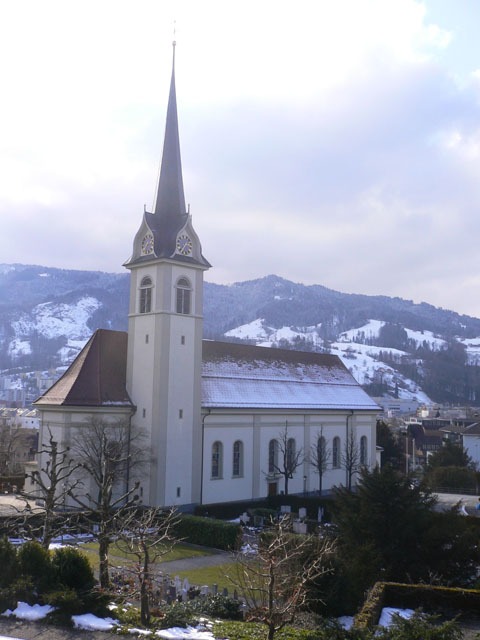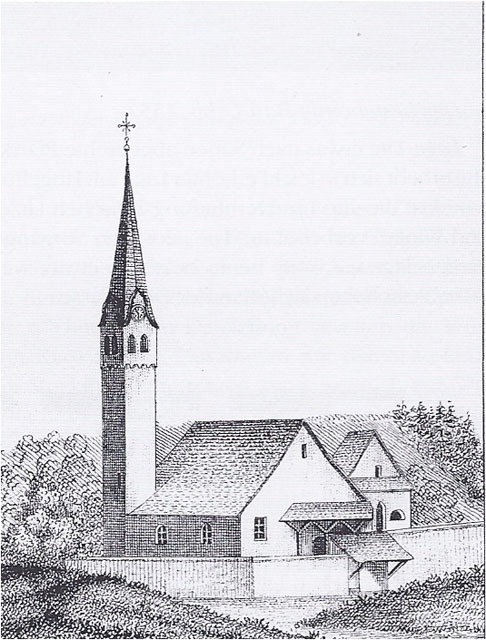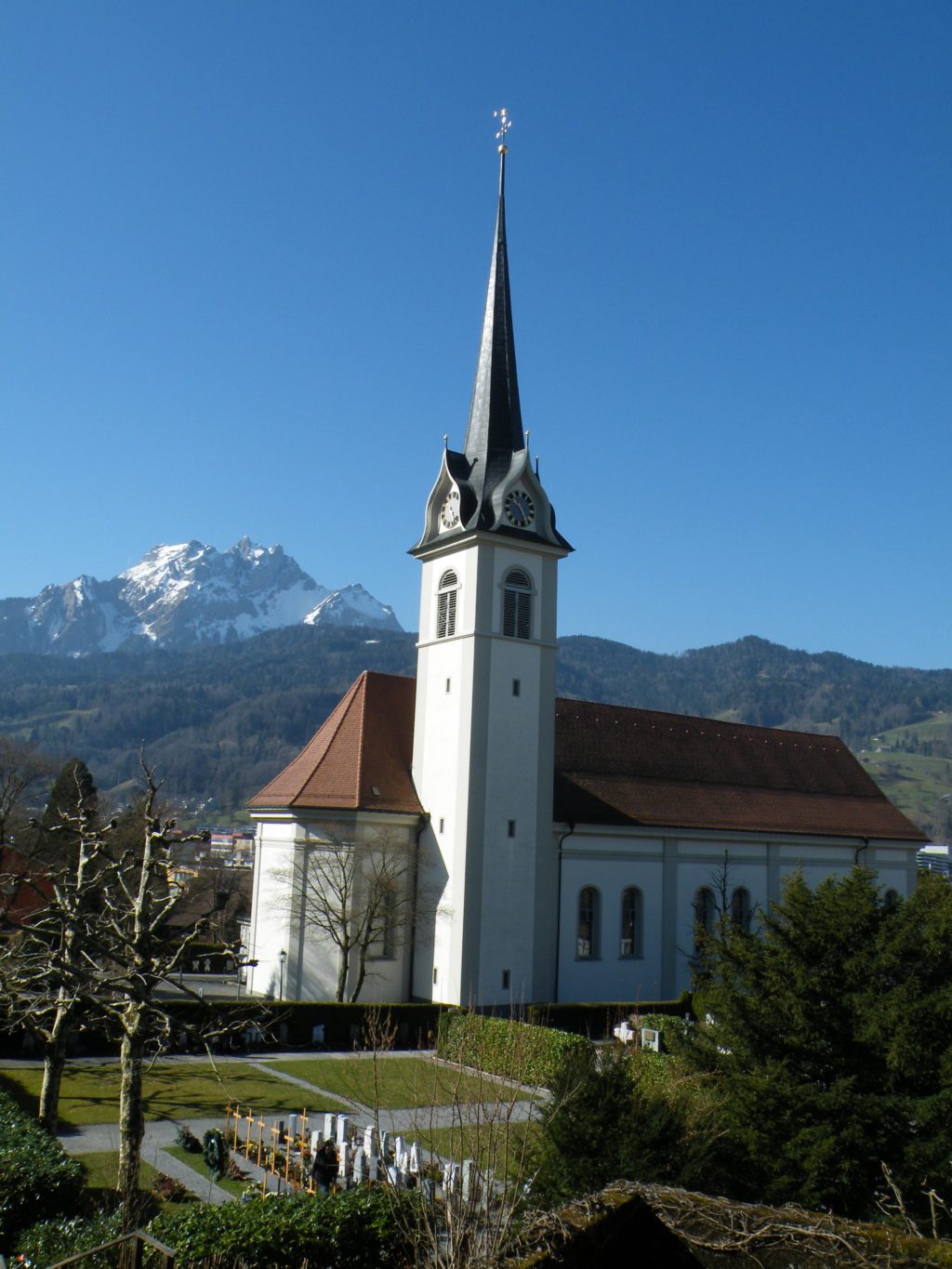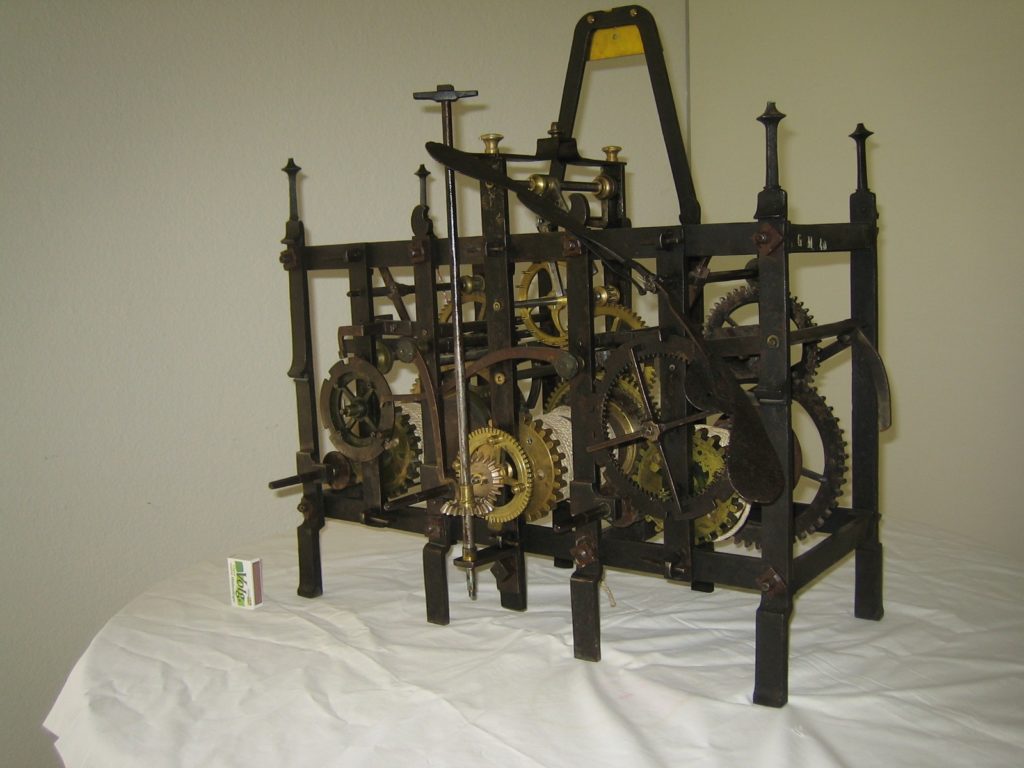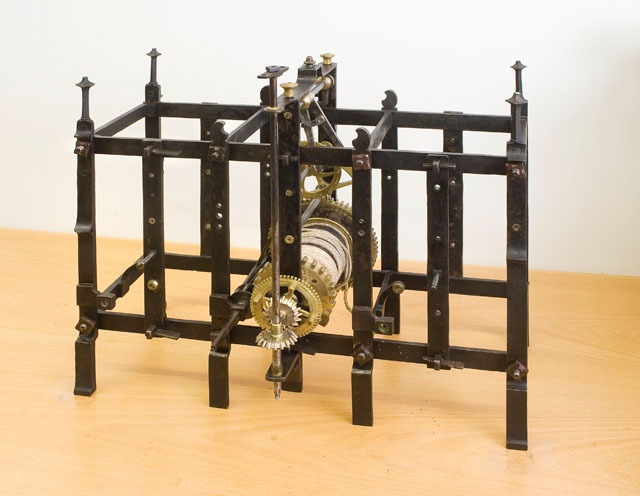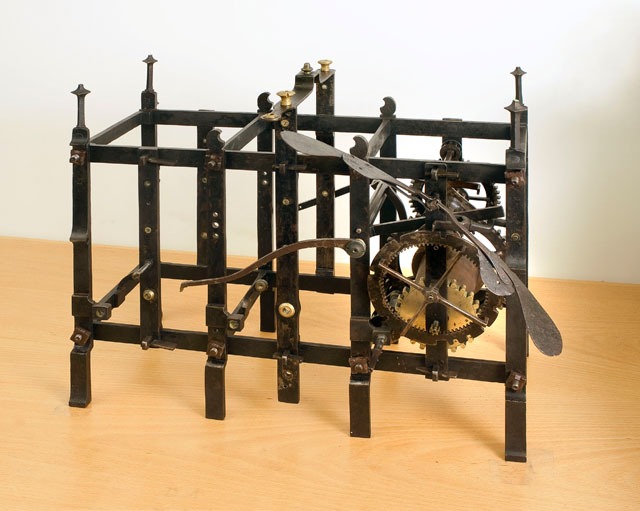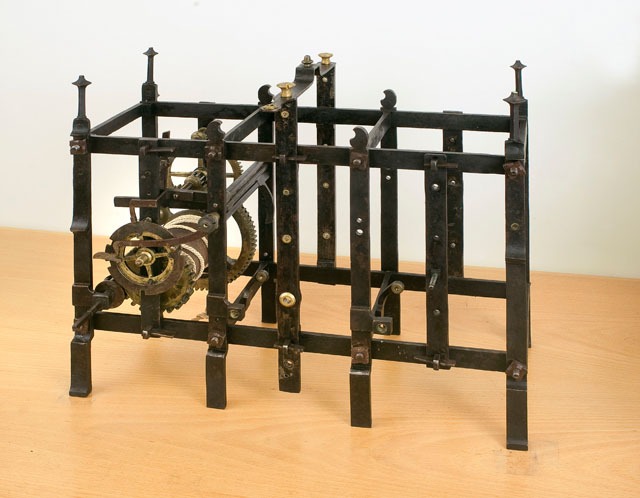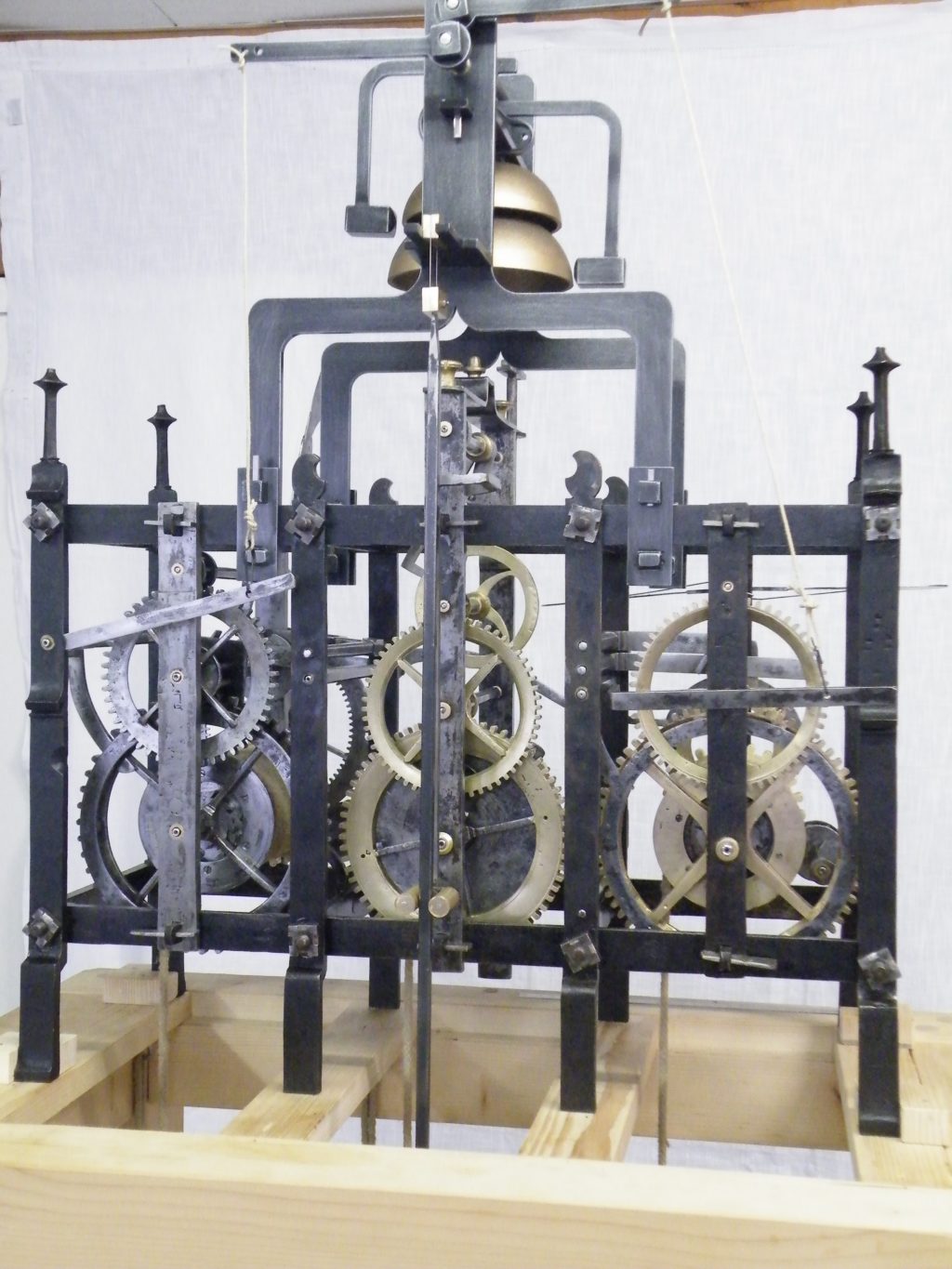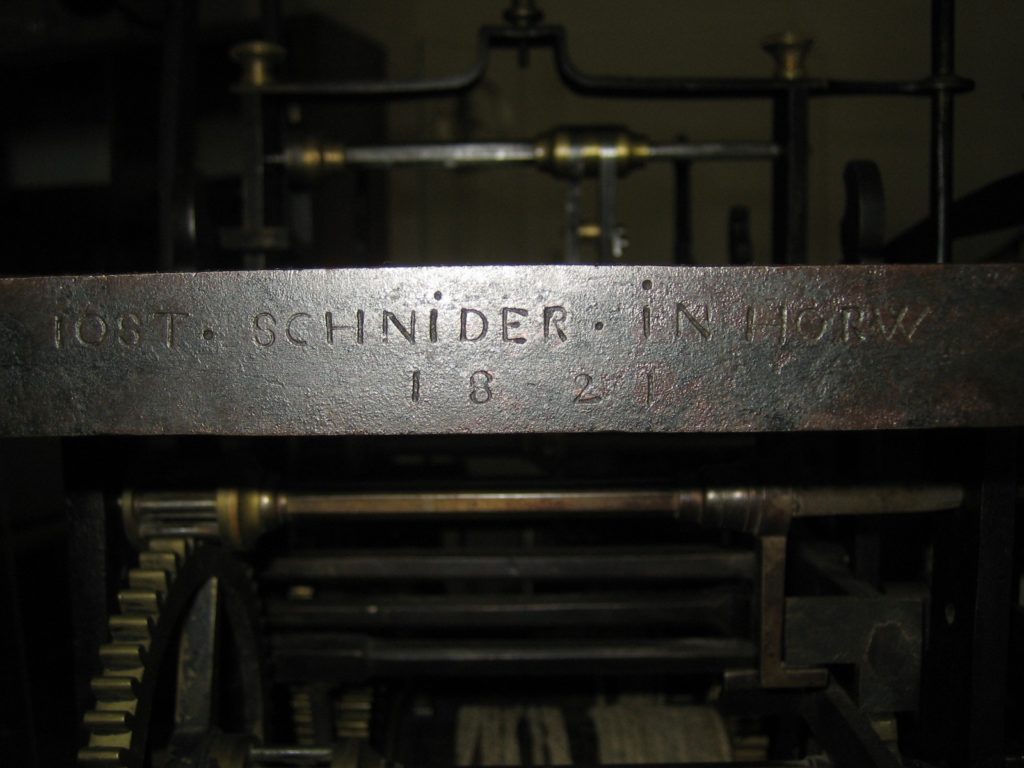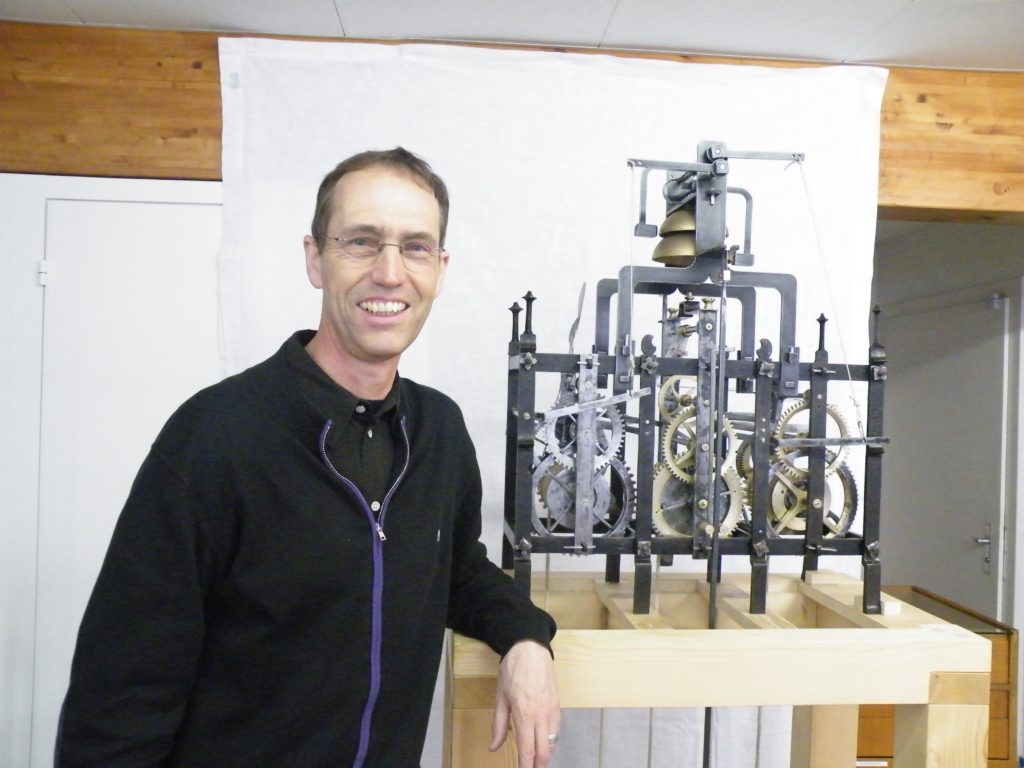
The Horw clock
Horw already had a church in the 12th/13th century and in the 15th century a new church was built. The actual parish church of St. Catherine was constructed according to the plans of Josef Singer between in 1813–1819. The late Baroque country church diagram influenced the design of the light, spacious hall church ornamented with plasterwork by Johann Josef Moosbrugger. The steeple adjoins the inserted choir on the north-east side of the church. Below the pyramidal roof of the spire there are arched clock gables. The Horw clock was the church clock in the spire of the parish church of St. Catherine. The church clock of Horw includes technical elements from the late Gothic period as well as the 17th and 18th century. The columns of the clock-work date from the time before 1600 whereas the striking work was manufactured after 1700. In 1821 the striking work was repaired by the clock-maker Jost Schnyder from Horw when he constructed the new clock. In 1894 the brothers Villiger (Filliger) added a quarter hour striking work to the church clock.
